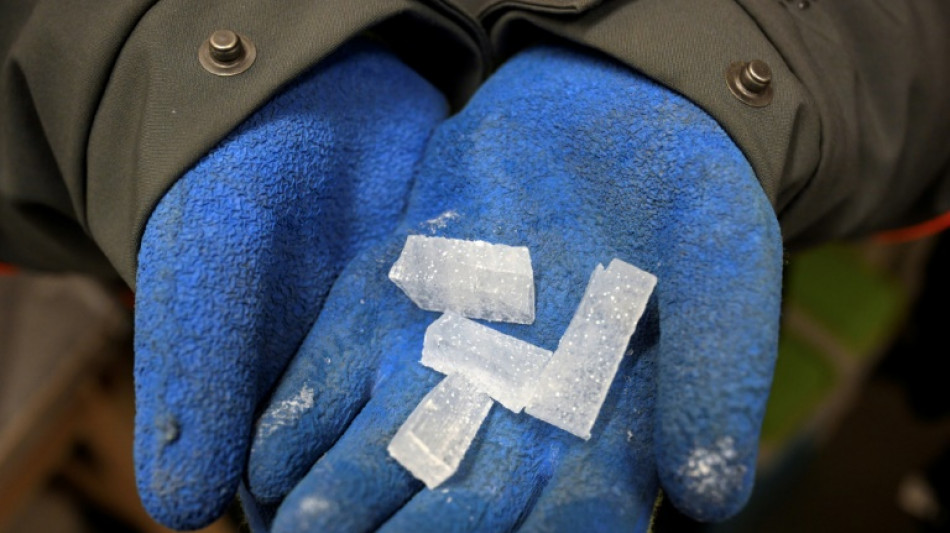
-
 Court rules against K-pop group NewJeans in label dispute
Court rules against K-pop group NewJeans in label dispute
-
India's Iyer says 'getting better by the day' after lacerated spleen

-
 Yesavage fairytale carries Blue Jays to World Series brink
Yesavage fairytale carries Blue Jays to World Series brink
-
Bank of Japan keeps interest rates unchanged
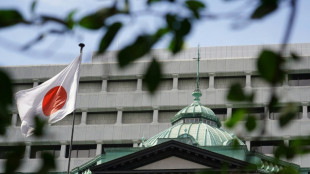
-
 Impoverished Filipinos forge a life among the tombstones
Impoverished Filipinos forge a life among the tombstones
-
Jokic posts fourth straight triple-double as Nuggets rout Pelicans
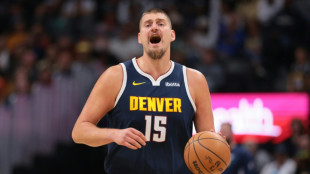
-
 UN calls for end to Sudan siege after mass hospital killings
UN calls for end to Sudan siege after mass hospital killings
-
Teenage Australian cricketer dies after being hit by ball
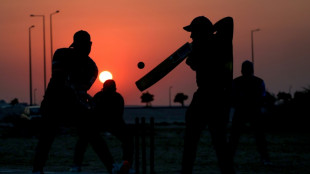
-
 As Russia advances on Kupiansk, Ukrainians fear second occupation
As Russia advances on Kupiansk, Ukrainians fear second occupation
-
Trade truce in balance as Trump meets 'tough negotiator' Xi

-
 China to send youngest astronaut, mice on space mission this week
China to send youngest astronaut, mice on space mission this week
-
Yesavage gem carries Blue Jays to brink of World Series as Dodgers downed

-
 With inflation under control, ECB to hold rates steady again
With inflation under control, ECB to hold rates steady again
-
Asia stocks muted with all eyes on Trump-Xi meeting
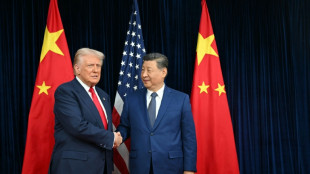
-
 Personal tipping points: Four people share their climate journeys
Personal tipping points: Four people share their climate journeys
-
Moto3 rider Dettwiler 'no longer critical' after crash: family
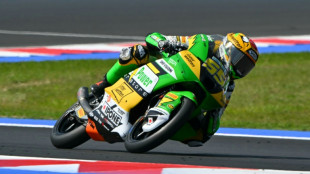
-
 US economy in the dark as government shutdown cuts off crucial data
US economy in the dark as government shutdown cuts off crucial data
-
Trump orders nuclear testing resumption ahead of Xi talks

-
 'Utter madness': NZ farmers agree dairy sale to French group
'Utter madness': NZ farmers agree dairy sale to French group
-
Samsung posts 32% profit rise on-year in third quarter

-
 30 years after cliffhanger vote, Quebec separatists voice hope for independence
30 years after cliffhanger vote, Quebec separatists voice hope for independence
-
Taxes, labor laws, pensions: what Milei wants to do next

-
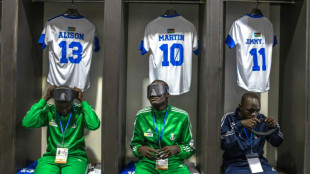 South Sudan's blind football team dreams of Paralympic glory
South Sudan's blind football team dreams of Paralympic glory
-
US says 4 killed in new strike on alleged Pacific drug boat

-
 What we do and don't know about Rio's deadly police raid
What we do and don't know about Rio's deadly police raid
-
'They slit my son's throat' says mother of teen killed in Rio police raid

-
 Arteta hails 'special' Dowman after 15-year-old makes historic Arsenal start
Arteta hails 'special' Dowman after 15-year-old makes historic Arsenal start
-
Google parent Alphabet posts first $100 bn quarter as AI fuels growth

-
 Underwater 'human habitat' aims to allow researchers to make weeklong dives
Underwater 'human habitat' aims to allow researchers to make weeklong dives
-
Maresca slams Delap for 'stupid' red card in Chelsea win at Wolves

-
 'Non-interventionist' Trump flexes muscles in Latin America
'Non-interventionist' Trump flexes muscles in Latin America
-
Slot defends League Cup selection despite not meeting 'Liverpool standards'
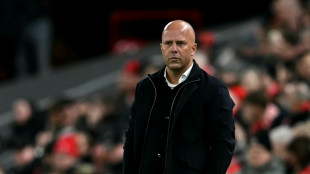
-
 'Poor' PSG retain Ligue 1 lead despite stalemate and Doue injury
'Poor' PSG retain Ligue 1 lead despite stalemate and Doue injury
-
Liverpool crisis mounts after League Cup exit against Palace

-
 Kane scores twice as Bayern set European wins record
Kane scores twice as Bayern set European wins record
-
Radio Free Asia suspends operations after Trump cuts and shutdown

-
 Meta shares sink as $16 bn US tax charge tanks profit
Meta shares sink as $16 bn US tax charge tanks profit
-
Dollar rises after Fed chair says December rate cut not a given

-
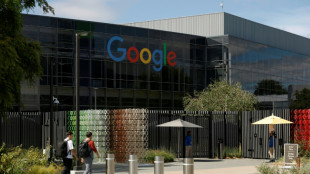 Google parent Alphabet posts first $100 bn quarter as AI drives growth
Google parent Alphabet posts first $100 bn quarter as AI drives growth
-
Rob Jetten: ex-athlete setting the pace in Dutch politics

-
 Juve bounce back after Tudor sacking as Roma keep pace with leaders Napoli
Juve bounce back after Tudor sacking as Roma keep pace with leaders Napoli
-
Favorite Sovereignty scratched from Breeders' Cup Classic after fever

-
 Doue injured as PSG held at Lorient in Ligue 1
Doue injured as PSG held at Lorient in Ligue 1
-
Leverkusen win late in German Cup, Stuttgart progress

-
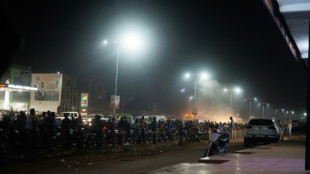 Jihadist fuel blockade makes life a struggle in Mali's capital
Jihadist fuel blockade makes life a struggle in Mali's capital
-
Uber plans San Francisco robotaxis in Waymo challenge
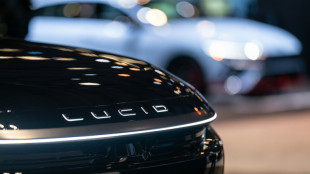
-
 Paramilitary chief vows united Sudan as his forces are accused of mass killings
Paramilitary chief vows united Sudan as his forces are accused of mass killings
-
Trump, Xi to meet seeking truce in damaging trade war

-
 Divided US Fed backs second quarter-point rate cut of 2025
Divided US Fed backs second quarter-point rate cut of 2025
-
'Amazing' feeling for Rees-Zammit on Wales return after NFL adventure


From Antarctica to Brussels, hunting climate clues in old ice
In a small, refrigerated room at a Brussels university, parka-wearing scientists chop up Antarctic ice cores tens of thousands of years old in search of clues to our planet's changing climate.
Trapped inside the cylindrical icicles are tiny air bubbles that can provide a snapshot of what the earth's atmosphere looked like back then.
"We want to know a lot about the climates of the past because we can use it as an analogy for what can happen in the future," said Harry Zekollari, a glaciologist at Vrije Universiteit Brussel (VUB).
Zekollari was part of a team of four that headed to the white continent in November on a mission to find some of the world's oldest ice -- without breaking the bank.
Ice dating back millions of years can be found deep inside Antarctica, close to the South Pole, buried under kilometres of fresher ice and snow.
But that's hard to reach and expeditions to drill it out are expensive.
A recent EU-funded mission that brought back some 1.2-million-year-old samples came with a total price tag of around 11 million euros (around $12.8 million).
To cut costs, the team from VUB and the nearby Universite Libre de Bruxelles (ULB) used satellite data and other clues to find areas where ancient ice might be more accessible.
- Blue ice -
Just like the water it is made of, ice flows towards the coast -- albeit slowly, explained Maaike Izeboud, a remote sensing specialist at VUB.
And when the flow hits an obstacle, say a ridge or mountain, bottom layers can be pushed up closer to the surface.
In a few rare spots, weather conditions like heavy winds prevent the formation of snow cover -- leaving thick layers of ice exposed.
Named after their colouration, which contrasts with the whiteness of the rest of the continent, these account for only about one percent of Antarctica territory.
"Blue ice areas are very special," said Izeboud.
Her team zeroed in on a blue ice stretch lying about 2,300 meters (7,500 feet) above sea level, around 60 kilometres (37 miles) from Belgium's Princess Elisabeth Antarctica Research Station.
Some old meteorites had been previously found there -- a hint that the surrounding ice is also old, the researchers explained.
A container camp was set up and after a few weeks of measurements, drilling, and frozen meals, in January the team came back with 15 ice cores totalling about 60 meters in length.
These were then shipped from South Africa to Belgium, where they arrived in late June.
Inside a stocky cement ULB building in the Belgian capital, they are now being cut into smaller pieces to then be shipped to specialised labs in France and China for dating.
Zekollari said the team hopes some of the samples, which were taken at shallow depths of about 10 meters, will be confirmed to be about 100,000 years old.
- Climate 'treasure hunt' -
This would allow them to go back and dig a few hundred meters deeper in the same spot for the big prize.
"It's like a treasure hunt," Zekollari, 36, said, comparing their work to drawing a map for "Indiana Jones".
"We're trying to cross the good spot on the map... and in one and a half years, we'll go back and we'll drill there," he said.
"We're dreaming a bit, but we hope to get maybe three, four, five-million-year-old ice."
Such ice could provide crucial input to climatologists studying the effects of global warming.
Climate projections and models are calibrated using existing data on past temperatures and greenhouse gases in the atmosphere -- but the puzzle has some missing pieces.
By the end of the century temperatures could reach levels similar to those the planet last experienced between 2.6 and 3.3 million years ago, said Etienne Legrain, 29, a paleo-climatologist at ULB.
But currently there is little data on what CO2 levels were back then -- a key metric to understand how much further warming we could expect.
"We don't know the link between CO2 concentration and temperature in a climate warmer than that of today," Legrain said.
His team hopes to find it trapped inside some very old ice. "The air bubbles are the atmosphere of the past," he said. "It's really like magic when you feel it."
F.Fehr--VB


